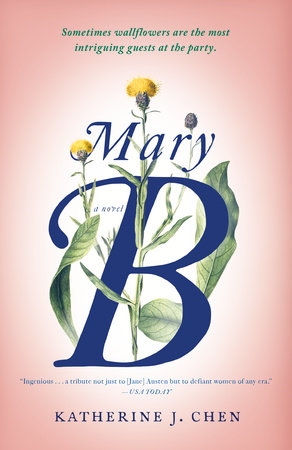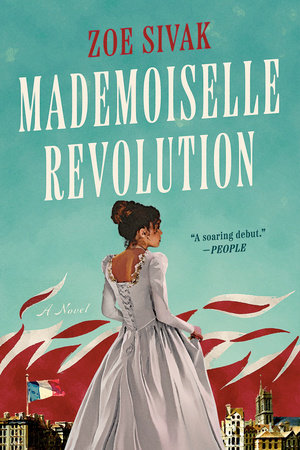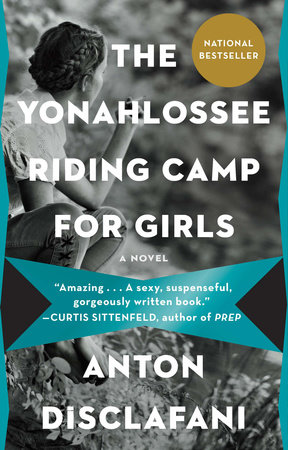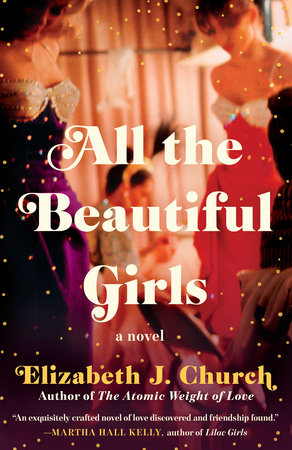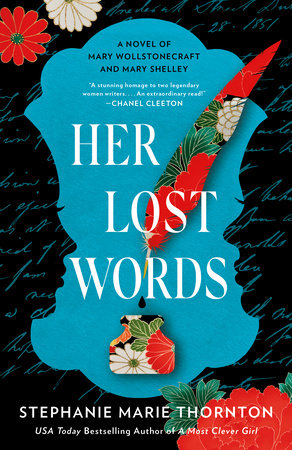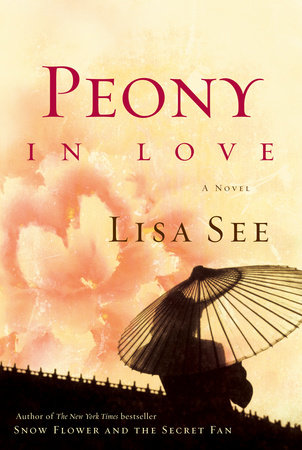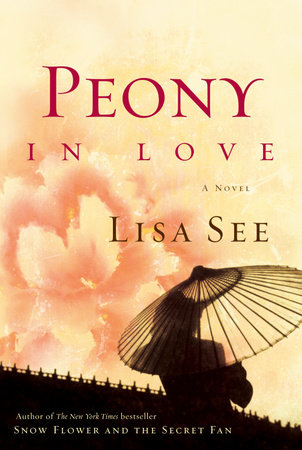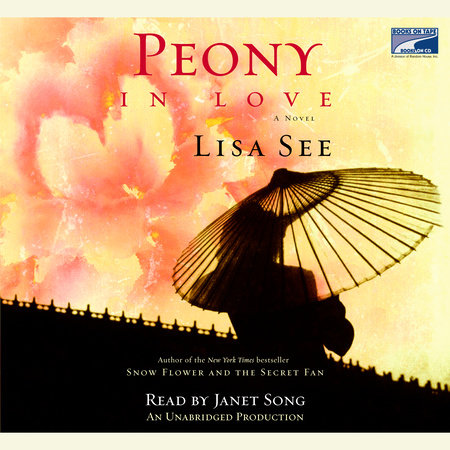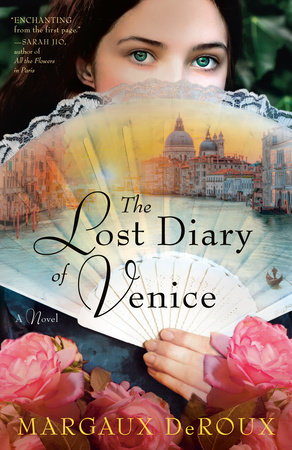A Conversation with Lisa See
Random House Reader’s Circle: In her commentary to the opera The Peony Pavilion, Peony writes: “Everything begins with love.” In what ways did you intend for Peony in Love to be a commentary on the way women perceive and become aware of love?
Lisa See: I don’t think of my writing as a commentary on anything. I wanted to explore different aspects of love: gratitude love, pity love, respectful love, romantic love, sexual love, sacrificing love, duty love, and finally mother love. Even though Peony dies at age sixteen, by the end of the novel she’s experienced and explored what most women hope to have in their lifetimes–love.
RHRC: Doctor Zhao seems to be the voice of persistent doubt, always voicing his opposition to The Peony Pavilion, and to women’s scholarship on the whole. Was Doctor Zhao based on a real person? How did you intend for him to function within the narrative?
LS: He’s not based on anyone in particular, although the words that come out of his mouth come from things actual men said. Doctor Zhao functions on many levels. First and foremost, Peony needed a doctor and her family could afford one at a time when so many couldn’t. I’ve always been interested in Chinese medicine. I love looking up old potions, cures, and remedies, knowing that many of them are still used today–some of them even on me! But Doctor Zhao also has to point out what others can’t or refuse to see. Even today, parents of girls with eating disorders have a hard time acknowledging what’s wrong with their daughters, finding treatment, let alone a cure. Finally, I needed someone–a man–to voice the belief that reading The Peony Pavilion was dangerous and that reading and writing could be fatal to women. Peony’s father and Ren [her true love] believed women should be exposed to books, but I had to have someone who could say what half the men were thinking at the time–a view that eventually prevailed–that an educated woman was a worthless woman.
RHRC: Did you always know that Peony would die? How did you conceive of telling the story of Three Wives’ Commentary from her perspective?
LS: I thought about the three wives for five years before I began writing the book. At first I thought I would tell each wife’s story, one right after the other, but I longed for one voice, who would have the strength to carry the whole story. One morning I woke up and knew that the first wife had to come back as a ghost. Not only would I have a single voice to carry me through, but Peony’s experiences could parallel Liniang’s in “The Peony Pavilion.”
RHRC: The concept of the soul splitting into three parts upon death reads like a perfect way to give Peony life, functionality, and a concrete existence, even though her body was no longer active on earth. Why did you choose to express Peony’s troubled existence through this transition?
LS: Spirits in the Chinese afterworld–whether beloved ancestors or ghosts–have the same wants, needs, and desires as living people. They need clothes, food, a place to live. They have emotions. Most important, in the Chinese tradition, spirits, ancestors, and even demons are very much a part of everyday life. This is why ancestor worship is so important. So for me the challenge was to create a believable situation (to Western readers, especially) for Peony. She can float, change form, and do many things that the living can’t do, but she is also limited–as all Chinese ghosts are–by things like corners, mirrors, scissors, and fern fronds. In other words, she inhabits a very real parallel world to the living world; both have their own rules of what can and can’t be done.
RHRC: Why was it important to place restrictions on Peony’s knowledge and capabilities in the afterlife–namely not being able to turn corners, or still having to learn life lessons before obtaining greater understanding?
LS: I didn’t place those restrictions. They’re there by Chinese tradition. Let’s take not being able to turn corners as an example. This belief permeates many facets of Chinese culture, including city planning, architecture, and landscape design. The first time I went to my family’s home village, I was told I wouldn’t be able to find it because I had to know the right set of tire tracks through the rice fields to get there. I thought my uncles were kidding, but they were right. I could see the village in the distance, but there were no straight roads to it or to any other village in China. Why? Because even today no one wants to give ghosts a straight line to a village. In wealthy homes and palaces, you see zigzag bridges, which are aesthetically beautiful but also have a practical purpose. How many zigzags you had depended on your rank. Only the emperor could have nine zigzags. Even in wealthy, elite, educated homes, people didn’t want ghosts crossing their bridges. But obviously Chinese ghosts have found ways to get around these obstacles, otherwise there wouldn’t be Chinese ghost stories. I took those things that are traditionally harmful to ghosts and then had to figure out how Peony would overcome or work around them.
RHRC: When did the Chinese stop believing in all this?
LS: They haven’t. In mainland China, some of these traditions and beliefs disappeared during the Mao era, but a lot of them are returning now. In Taiwan, ghost marriages are still practiced, because even in death everyone needs to have a spouse. Around the world, even here in the U.S., Chinese still celebrate New Year by sending the Kitchen God to Heaven to report to the ancestors on the family’s behavior during the past year.
My point here is that other countries and cultures have different belief systems. One isn’t right and the other wrong, although certainly wars and even personal arguments are fought all the time over whose religion is right. But I hope readers who find these beliefs disturbing, unsettling, or unbelievable will consider for a moment what people on the other side of the world might think about the Christian belief in the father, the son, and the holy ghost. In China, I’ve been asked many times, “People in the West don’t really believe in that stuff, do they?”
RHRC: You weave many secrets into this novel–secrets meant to protect but in the end only do harm, and harmful secrets that bring joy once revealed. What did you wish your readers to take away from this?
LS: People keep secrets from each other all the time. Wives keep secrets from their husbands; husbands keep secrets from their wives. We’ll tell one friend something but not another. Secrets begin almost from birth. There are many things we choose not to tell our children. Of course, many wonderful things are passed from grandmother to mother to daughter down through the generations, and those things make us into the people we are. But there are other stories–secrets–that also have a ripple effect. We may not know what happened in the past–that’s why they’re secrets–but these things also help to turn us into the people we become as adults. I’ve found that many of these secrets have to do with how men and women treat each other, with the result that generations later you find women who are extremely fearful of men, or have a belief that men will somehow “save” them, or that they have a repeating pattern of choosing an alcoholic or abusive husband, and they don’t know why.
RHRC: What was Wu Ren experiencing in the years between his weddings? Why did you choose not to express his experience during that time?
LS: At last, an easy question! Very little is known about Wu Ren and what’s known I used. But your question reminds me of another one that I’m often asked: What parts of the story are true and what parts are fictional? I tried to stay as true as possible to the story of the three wives. This caused lots of problems, because truth is always stranger than fiction. One fire destroying a manuscript in a story is believable, but two fires? Yikes! And what about the dream that Ren and Yi share at the end? This dream is part of the historical record, but I had to try and make it believable. Finding the balance between fact and fiction was quite a challenge.
RHRC: What were your favorite scenes to write?
LS: My favorite scenes were the ones between Peony and her grandmother, Peony and her mother (once she arrived in the afterworld), and the three of them together. I got weepy when I wrote those scenes, particularly the one when Peony’s mother and grandmother came back to earth for Peony’s wedding. This goes back to the secrets you asked me about earlier. What we tell each other and what we know to be true are often completely different. Peony’s grandmother is so sure she’s right, but she isn’t. Peony thinks she knows what’s going on, but she doesn’t. And Peony’s mother is just incredible. She embodies all that’s good and bad in mother love. She tries so hard to protect her daughter, but ends up failing in such a tragic way. But how can we protect our children, really? We can’t. We can only do the best we can in the moment. Then, when Peony’s mother turned out to have been the woman to write the poem on the wall . . . well, it nearly killed me. To me, these three women change in profound ways, but that’s what women do. We change, we evolve, we make mistakes, we love, and we try to do the best we can.
RHRC: How did you prepare to write Peony in Love? Was extensive research needed, and if so, what were your sources?
LS: I’m a research fiend. I love it. I read everything I could on the three wives and I spoke with the top scholars in the field of Chinese women’s history. I also found first-person accounts of what happened during the Manchu invasion of Yangzhou. These were true stories of terrible suffering, but I used them to tell what happened to Peony’s mother and her family, because the truthful details were so much more wrenching and terrifying than anything I could have made up. A whole separate part of my research had to do with ghosts and the need for sons, which are closely related. And of course, I went to China. I went to every location that I wrote about. Even today, Hangzhou is considered China’s most romantic city. So while that trip wasn’t as hard or as dramatic as some I’ve done for other books, I know I couldn’t have written the novel if I hadn’t spent time in Hangzhou and its environs.
RHRC: Do you think Peony in Love has a broader message for its contemporary readers?
LS: Both Peony in Love and my previous novel, Snow Flower and the Secret Fan, tell part of a larger story about women and our lost history. Women today are very lucky, but we’ve only been able to get to where we are because of all the suffering, failures, tragedies, and triumphs of the women who came before us. We should rejoice in what they did. At the same time, I don’t think our lives are so removed from theirs. We–and I’m speaking here of men and women–still long–need–to be heard. Peony is about what one person will endure to be heard.
RHRC: In the margins of The Three Wives’ Commentary, Qian Yi asked: “Why is it that so many women’s thoughts have been like flowers in the wind, drifting off with the current and vanishing without a trace?” How would you answer this question?
LS: We hear that in the past there were no women writers, no women artists, no women chefs– I could go on and on–but of course women did these things! It’s just that so often what they did was lost, forgotten, or deliberately covered up. But even today, as far as women have come and as much as we’ve accomplished, women’s words still can vanish without a trace, and it often happens at the most intimate, day-to-day level. Let’s take a high-powered woman executive, as an example. During the day, she’s accustomed to people listening to her, right? But when she comes home, she can say to her kids, “Clean your room, clean your room, CLEAN YOUR ROOM!” And they don’t listen. They don’t hear her, because she’s just the mom. (This happens to stay-at-home moms too.) And you can tell your husband twenty times that the two of you will be meeting friends for dinner or that the cereal is on the second shelf, and he’ll still ask, “Why didn’t you tell me we were going out?” or “Where’s the cereal?” because he hasn’t been listening because you’re just the wife. I’m not cranky about it or anything close to that. I’m just saying this is my experience and I know a lot of women share in this experience too. We laugh it off and call what our husband and kids do endearing, because we love them. But since this happens at the domestic level even now, it doesn’t surprise me that in the past women’s accomplishments–in particular their writings, their words–were lost and ignored. China was very lucky to have men who collected and preserved what women wrote, but where are women’s writings from Europe and other parts of the world? Lost, and drifting on the wind. . . .
RHRC: You do a lot of different things: you’re a Los Angeles city commissioner, you curate museum exhibitions, you go out and speak, you’re on several boards, you write books for which you sometimes go on quite adventurous (some might say scary) research expeditions, and you have a family too. How do you find time to do it all? And what’s your day like?
LS: A lot of writers are shy by nature. That’s part of the reason we become writers. We like to be alone in our rooms day after day. I know I do. But I’ve worked for years to force myself to go out and do things. When I was in my early twenties, I even challenged myself to do one “outrageous” thing a week. I have to admit I didn’t do anything all that outrageous, but I did push the borders of what I could do and how brave I could be. Beyond that, how can you write if you have no experience of the world, of people, of emotions? E. M. Forster wrote, “Only connect.” How can you write about the human experience if you don’t connect? So I go out and I do stuff–lots of stuff–and I try to connect.
Still, the writing comes first. I wake up early, get a cup of tea, and check my e-mail, because my husband exercises in the room off my office, so the music’s blasting and he’s thumping away on some machine or other. Once the room has quieted down, I write a thousand words. That’s just four pages. Sometimes I write more but never less. Then I get dressed and start to think about the rest of the day.
RHRC: All your novels so far are set wholly or partly in China. Did the family background you discovered while writing On Gold Mountain inspire you to focus on this aspect of your genetic inheritance in your fiction?
LS: I’ve always been intrigued by lost stories and lost history. This was true with my own Chinese-American background, so yes, I’d say that my desire to find lost stories very much comes from writing On Gold Mountain. I mean, how crazy is it to look into your family history and find a great-grandfather who got his start in this country by selling crotchless underwear to brothels? So much of what my family did was either borderline illegal or full-on out-there illegal. At the same time, history was happening all around them. History was happening to them. I’ve stayed with this idea of history happening to individual people with all my novels, including Peony in Love.
But something else happened as a result of writing On Gold Mountain. I hadn’t really thought too much about my identity. Who does, after all? All of a sudden people asked me–and still do–“What are you, Chinese or American?” I know that, because of how I look, I will always be seen as a bit of an outsider in Chinatown, but to me it’s home. It’s what I know. The same can be said for when I go to China. To me, it’s just a bigger Chinatown–very familiar and comfortable, but again, because of how I look I’ll always be considered an outsider. Then when I’m out in the larger white community in the United States, I look like I belong but sometimes I don’t feel like I do. That world can seem strange and foreign to me. So in writing these books I’m also trying to figure out who I am. Where do I fit in? Here, there, anywhere, nowhere?
RHRC: Finally, what are you working on now?
LS: The new novel’s tentatively called Shanghai Girls, and I’ve been having a lot of fun with it. It starts in 1937 with two sisters in Shanghai. They come to Los Angeles in arranged marriages. We often read about arranged marriages in other countries, but a lot of people don’t know that we had and still have them here in the U.S. Back in the 1930s, my great-uncle took his sons back to China. A lot of dads would have said, “Here’s some money, go find a souvenir,” but he said, “As long as we’re here, let’s get you boys wives.” And that’s exactly what they did. The oldest was about twenty-five and the youngest was about fourteen. The women (and girls), who in China had had servants, came to Los Angeles and became the servants. They had very hard and often sad lives. Shanghai Girls is going to reveal a time and place that people know very little about, even though it happened right here in our country. Lastly, this is a story of two sisters. Every relationship between sisters, no matter how loving and close, is plagued by sibling rivalry: who’s prettier, richer, more talented, happier, the better mother? Your sister is the one person who should stick by you and love you no matter what, but she’s also the one who knows exactly where to stab the knife to hurt you the most. Every woman who has a sister will see the shared hopes, dreams, petty rivalries, and deep connections–for good and bad–that only sisters (and often best friends, who are like sisters) can have.


